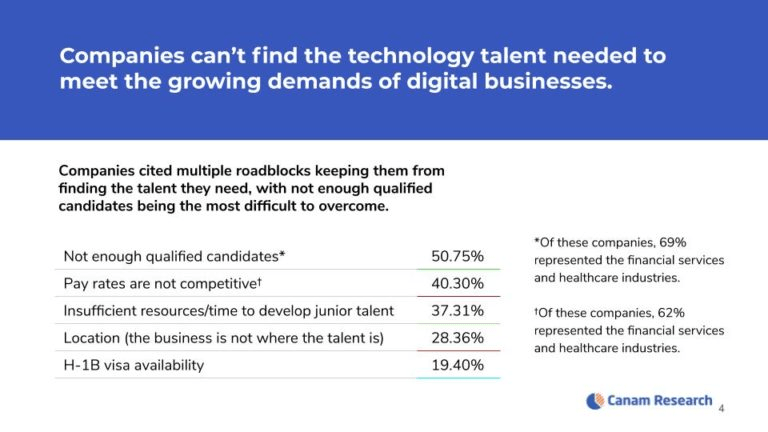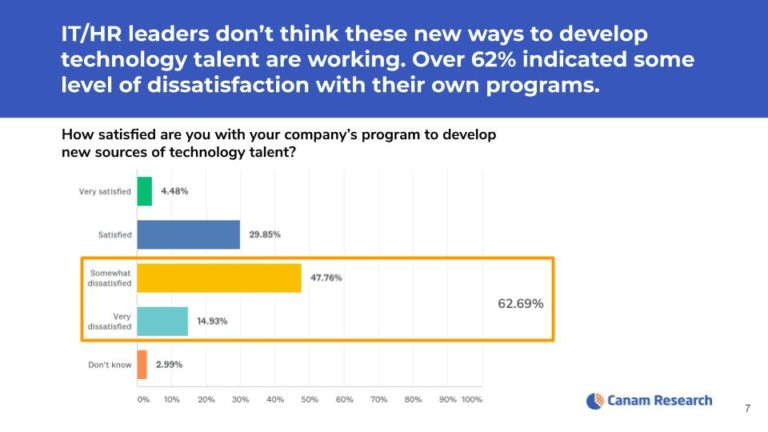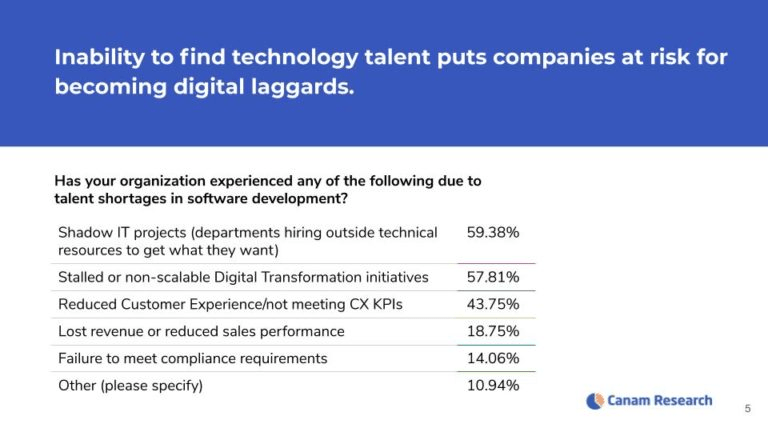We wanted to see how prominent this problem is in the United States and how technology and HR leaders are solving it. So, in conjunction with Canam Research, we conducted The State of the Digital Tech Workforce Survey. After talking with leaders at companies like Amazon, Bank of America, Cisco and Live Nation, here are the top three things we found.
The skills gap is real
50% of companies can’t find enough qualified candidates for tech roles. 40% can’t pay enough to attract top talent.

No one knows how to solve it
63% are dissatisfied with current programs designed to find new sources of tech talent.

Inability to find technology talent puts companies at risk for becoming digital laggards
The first three numbers in the chart below are like canaries in the coal mine. They are warning signs that, if left unchecked, will lead companies to become digital laggards and join the 19% who experienced lost revenue.

So what needs to change in order to lessen the impact of the skills gap and create the talent pools companies need?
1. Bridge the gap
For companies to continue to grow, innovate and deliver the digital products customers expect, they must overcome the skills gap and find new sources of technology talent.
2. Cultivate new talent screening/development methods
Get creative with nontraditional methods in order to discover, develop and deploy new generations of great talent.
3. Diversify the tech industry
Companies should continue to focus on diversity as a business driver. This includes diversity of education, background, age, work experience along with race and gender.
4. Who’s the boss?
Companies need a defined owner to close the skills gap, perhaps including the C-suite.
You can read the full survey analysis here.


